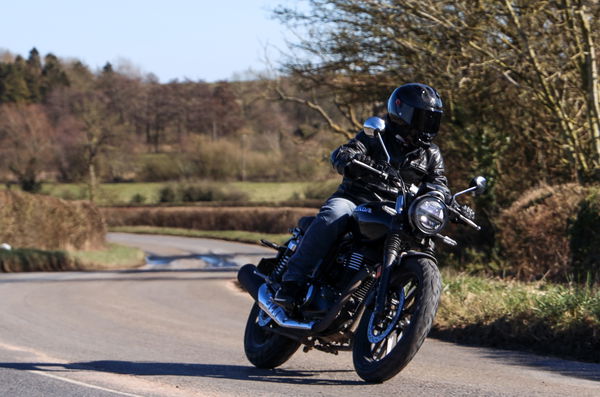BMW K1600 B LE Review - Better Than a Honda Gold Wing?
It boasts a silky smooth inline six-cylinder engine, a slick TFT dash and 157bhp, but can it take the crown from the Honda?
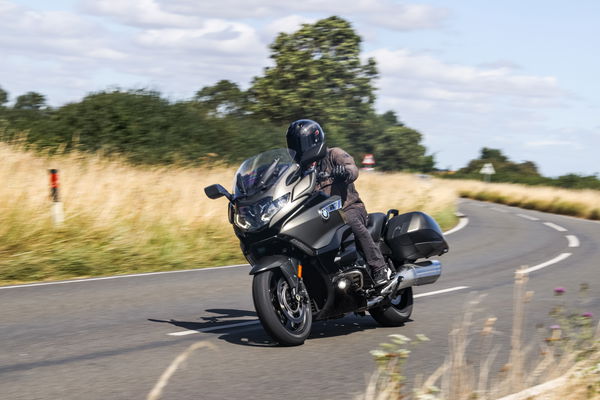
Announced in 2010, BMW’s K1600 range launched a three-pronged attack on the heavyweight grand touring motorcycle segment.
The GT formed the most agile and sporty of the breed, the GTL added more storage and comfort for the pillion thanks to the addition of a top case, and the B (denoting a Bagger) brought a long and low dose of North American cruising to the range. Joining the three in 2021 was the K1600 Grand America, a version of the K1600 B you can see me riding here with the addition of a top case.
As BMW is clearly setting out to take on the daddy of the large capacity six-cylinder touring segment with the K1600 range, we were keen to see if the raucous Beemer could cut it against the silky smooth Gold Wing. With that in mind, we booked out a two-week loan, covering many motorway miles, back roads and B-roads, and tested it both with and without a pillion.
How much does it cost?
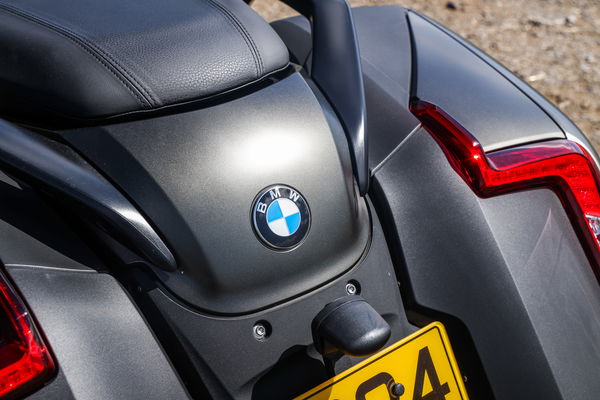
The K1600 B starts at £21,000 although the bike being ridden for this review is a K1600 B LE spec machine, costing £23,275. It also has the Exclusive paint option which is £350 (Black Strom Metallic is free of charge), the Comfort Pack, £1,000, and floor lighting which illuminates the ground under the bike when you park up after dark, £80.
Totalling all of the additional parts onto the BMW it comes in at £24,705, against the standard GL1800 Gold Wing DCT (the one without the passenger seat/top case) which is £25,649.
First impressions
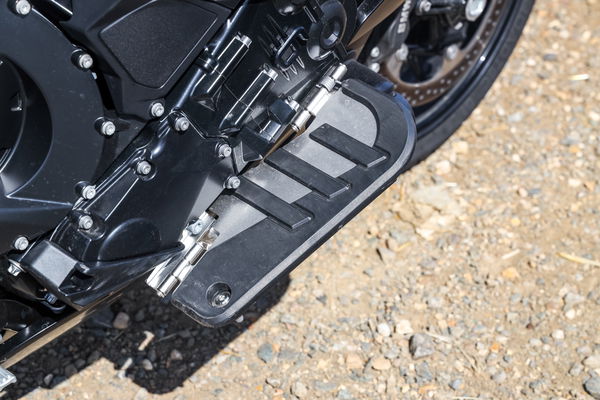
Heavyweight tourers like this aren’t for everyone, and they very much sit in the ‘acquired taste’ niche of motorcycle touring. I make no secret of my enjoyment of taking a big long boat for a ride, however, and have tested all of the biggest tourers from the likes of Harley-Davidson, Indian, Honda and BMW.
My first taste of the K1600 B is a blazingly hot mid-summer ride back from BMW’s bike storage facility. Hopping on the bike for the first time I’m greeted by all the same familiar switchgear as found on the latest generation R1300 and previous R1250 ranges of bikes. That means chunky switchgear, clean and uncluttered switch cubes and the now ubiquitous roller switch on the left handlebar.
One element updated in 2021 is the vast TFT dash that rivals anything you’d find on a car. It’s a whopping 10.25-inch item, and allows you to answer calls, decline texts, follow the navigation (Bluetooth-enabled smartphone is required) and play music either through the integrated DAB/FM radio or from the music library on your phone. Anyone who’s driven a relatively recent BMW car will recognise the fonts and graphics used on the TFT.
Is the tech easy to use?
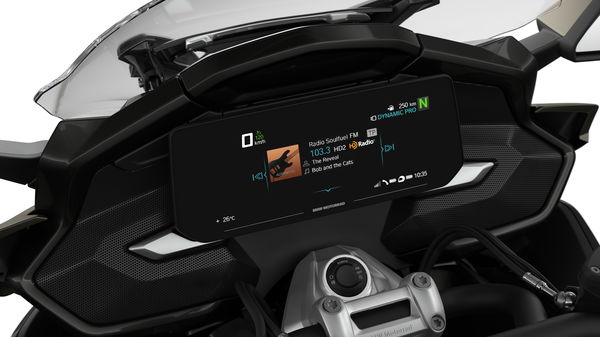
For the most part, swapping modes, changing settings, resetting trips, and so on, is relatively easy. As with anything on a high-tech bike like this, the first time you do something, it takes a while and then gets easier and quicker each time thereafter. One thing I’m not a huge fan of is faffing around with phones trying to get them paired via Bluetooth and then loading in my destination on the little app before it gets sent to the bike. It’s a pain in the backside, and just gets me wound up before I go out for a ride.
I’m much more of a fan of integrated sat-navs within the TFT, that can do all the mapping for you without the need to latch on to a phone. It’s something that Harley-Davidson, Honda and Indian can manage with their grand tourers. Given that BMW’s four-wheeled vehicles have nav systems that don’t require the use of a phone, it’s a shame it’s not the same case on the brand’s bikes.
What’s it like to ride?
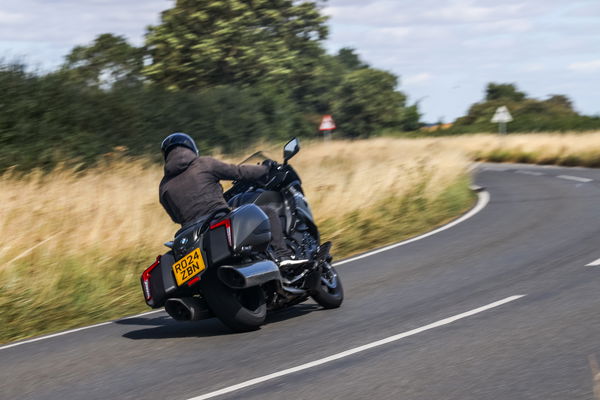
Thumbing the starter button for the first time, I’m greeted by that familiar BMW bark as the 1,649cc engine growls into life. If we were going on engine numbers alone, the Beemer would have the Honda well beaten, with the K1600 boasting 157bhp and 132lb ft of torque against the Gold Wing’s 125bhp and 125lb ft. Numbers only tell part of the story though, and pulling out for my first taste of the inline-six, the big differences are quickly revealed.

The BMW’s engine feels extremely rev-happy, stonking through the mid-range and shrieking towards the 8,500rpm redline. And that’s not to say it’s lacking in mid-range grunt, as you seem to be getting most of the engine’s twist all the way from 3,500 to 6,500rpm. Low-end clout is also strong, although it doesn’t have the same stump-pulling power as you get from some of the other grand tourers on the market.
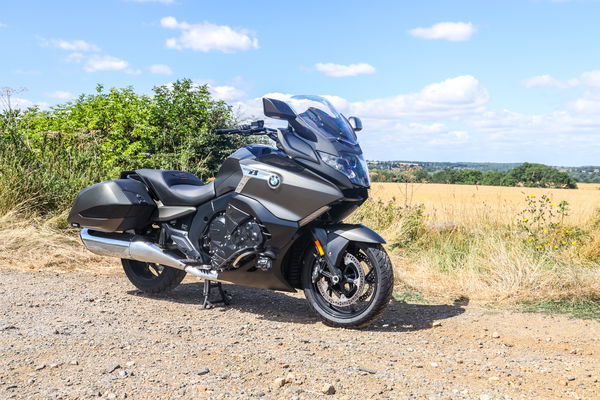
What the K1600 engine does very well is excite the rider, even in the standard Road riding mode. Everything from the power delivery to the exhaust note from the bazooka-a-like twin exhausts sends a shiver down my spine. Realising I’m not yet even in the sportiest of the modes on offer, I thumb the mode button on the right handlebar to select Dynamic, and the fast only gets faster. The throttle connection is now virtually 1:1, and with the Dynamic ESA (Electronic Suspension Adjustment) firmer and more supportive than before, the K1600 fires me at the horizon in a mind-bending manner.
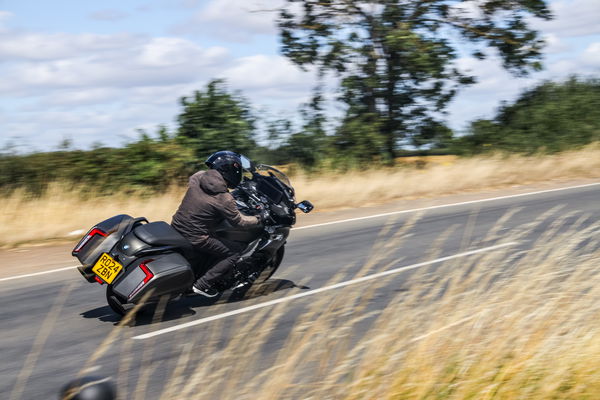
As I said earlier, the numbers only tell part of the story, and all this acceleration and spine-tingling performance has got me wondering. Is this really what a supposed grand tourer should be like? Sure, fast touring is fun, and while the K1600 would fire you across a continent faster than most other bikes, the ease of access to this much performance means I’m rarely actually riding it like a tourer. Instead I’m full-throttle out of every corner and relishing having that captivating engine beneath me.
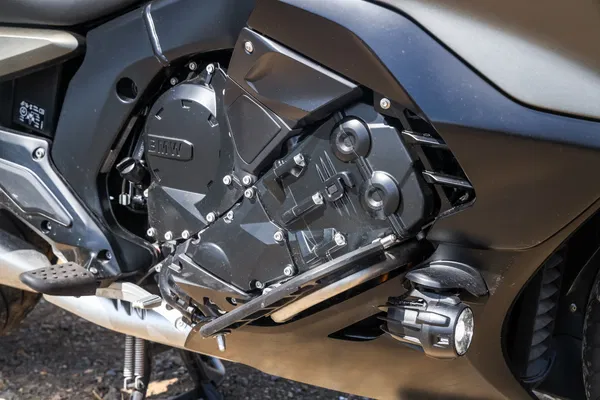
What enables you to enjoy everything the K1600 B’s engine has to offer is the chassis. It always amazes me when a manufacturer brings out a bike like this and somehow makes it stop and steer like a much smaller machine. Granted, the bulk of the bike is never far from your mind, but don’t be fooled into thinking that because it's big and long the BMW doesn’t like to get its groove on when ridden on a decent road.
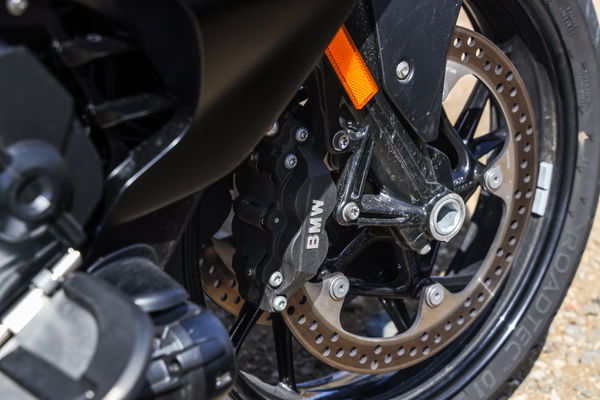
The Dynamic ESA is what’s allowing this to happen, as the damping is constantly monitoring the way the bike is being ridden and the road you are riding on. As with any of these semi-active suspension systems, it can get a little flummoxed by rough roads and mid-corner bumps, but for the most part, the ESA does a great job of letting you throw the 344kg bike around with surprising accuracy.
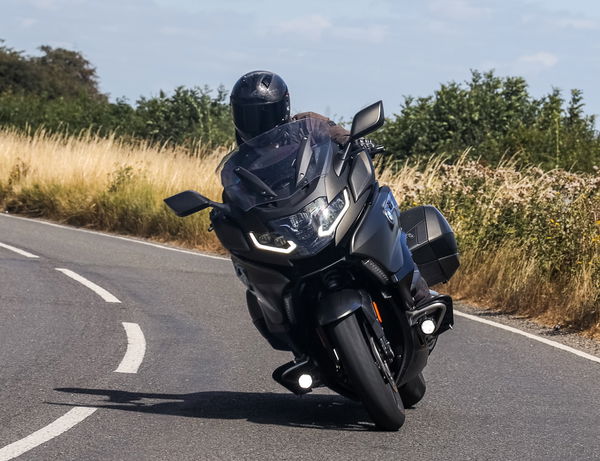
Hunt out some smoother roads (which let’s face it in the UK is hard) and the bike feels much more at home, showing excellent stability in faster corners and allowing you to exploit everything the 310mm four-piston front discs have to offer. The lever feel of the brakes is very good, and you have to really push the front to begin feeling the ABS chiming in.
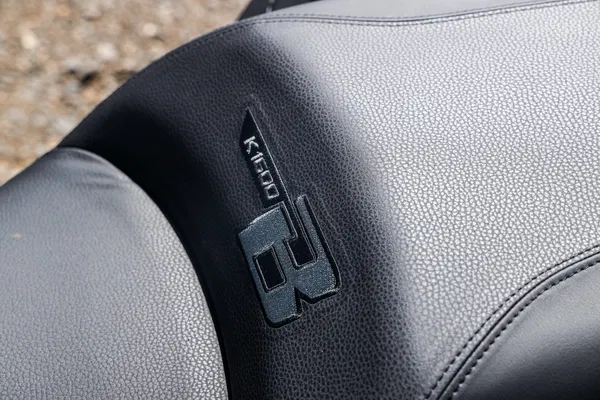
One thing the K1600 B can do well is keep you very comfortable. The riding position is, as you’d expect from a bike like this, extremely relaxing, and even when emptying the 26.5-litre fuel tank (and getting over 250 miles to a fill-up!), your day should pass without any aches and pains. Taller riders will need to look at adding the feet-forward running boards (as fitted on our test bike) which allow you to extend your legs on long motorway stretches. As standard, the mid-set controls might not leave enough legroom if you're taller than six foot.
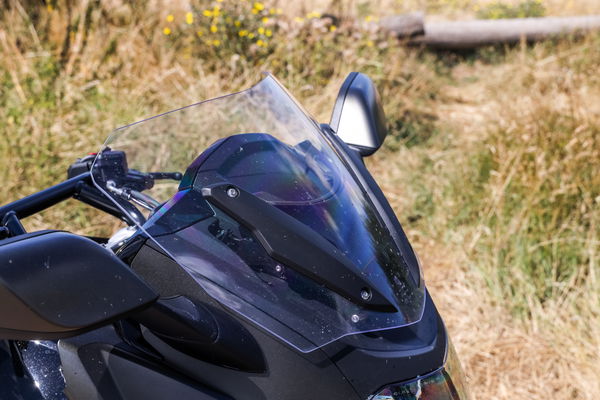
As is typical for a six-cylinder engine, everything is super smooth, whether you’re cruising at motorway speeds or banging into the rev limiter out of a hairpin bend. The pegs, bars, seat and fuel tank are all vibration-free. You also get an electronically adjustable screen which is a nice touch on a bike like this, and it remembers your last setting and closes the screen when you key off and reapplies the same height setting the next time you turn the bike on.
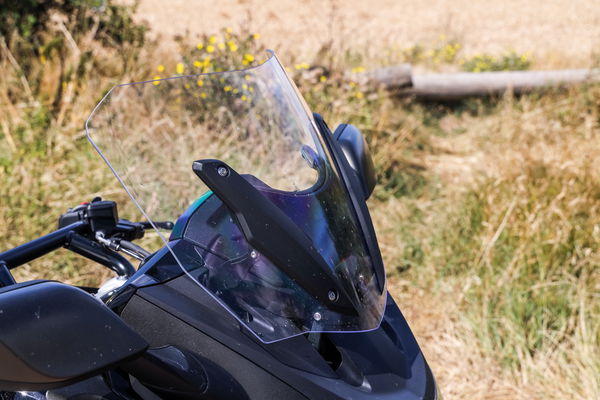
One thing to note on the screen is that it's lower on the bagger and GT than it is on the GTL. For me it’s fine, and on the highest setting, I can just get my helmet beneath the turbulence and into a bubble of still air. I’m not very tall though (five feet seven inches) and if you’re loftier than me and turbulence on long trips is an issue, you might want to look at the optional bigger screen. And while we are on the subject of height. The K1600 B might be a 344kg bike with a 1,618mm wheelbase, but that doesn't mean it’s not fairly accessible. With a very low 750mm seat I can safely flat foot on the ground, even with a fairly chunky step over thanks to the wide and comfortable saddle.
What’s the storage capacity like?
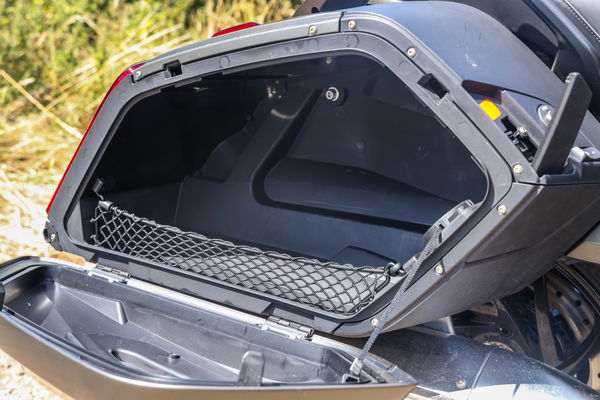
If you are eyeing the B variant of the K1600 you are probably less worried about filling up the panniers and heading cross-country than you are about looking cool. That said, you do get a handy 37 litres per pannier which is enough for a long weekend for one or maybe two people. I can just about squeeze a full face lid in each side (I managed this with my medium Arai Chaser X and Shoei X-Spirit III), although to do so means forcing it into the pannier - so maybe not something you’d want to do if you have a swanky new carbon lid.
Any bad points?
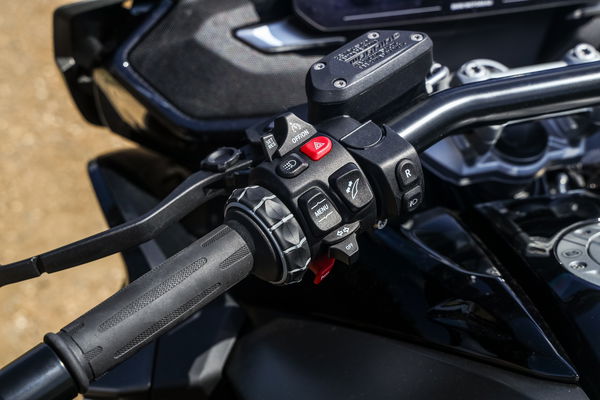
There are a few little things that I picked up on during my time with the Beemer. The first one was a handling trait that I could never quite get my head around. When cruising on the motorway the bike seems to constantly fidget about, like the front and rear of the bike are making tiny movements all the time and independently of each other. I’m not calling this an instability issue in any way shape or form, because it didn’t increase in severity as speed increased or decreased, and it did it regardless of how many people were on the bike. It was though definitely there, and something I was able to observe with my own eyes as I followed Visordown’s Matt as he took it up the road and I followed on another bike.
Another point I noticed, which is at odds with the relaxed style of the bike, was the quickshifter. It’s not the smoothest I’ve encountered, and while some other bikes match the revs almost imperceptibly at a wide range of road and engine speeds, the quickshifter on this bike seems to have a much smaller operating window. If I’m ‘on it’ and up near the redline of the engine, upshifts and downshifts are much smoother, although if I lean on the system around town, nine times out of ten it’d end up slapping me in the back with a handful of torque - and if I have a pillion on the bike we inevitably clatter into each other.
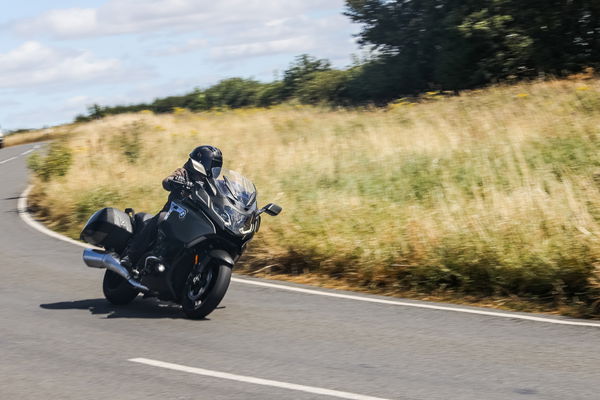
The final gripe I have, which may improve over time, is the switchgear. It’s nicely laid out and easy to use in daylight - I have no problems there. After dark, though, and with the ginormous TFT dominating your view, you’re totally (and quite literally) in the dark when it comes to finding the screen adjustment, riding mode or menu buttons. On a bike like this, backlit switchgear should be a given, and it’s already commonplace on some other premium tourers and adventure bikes from some other brands.
Is the BMW K1600 B LE better than a Honda GL1800 Gold Wing?
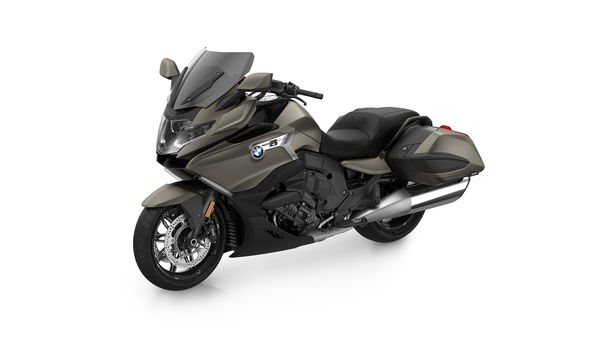
The K1600 B and the GL1800 Gold Wing are similar in so many respects and far removed from each other in so many others. Where the BMW is a bike that offers bonkers acceleration and slick-handling excitement, the Gold Wing is a much calmer, more relaxed and silky-smooth proposition. Both provide a rider and passenger with excellent levels of comfort and are surprisingly accessible for such a large bike.
Both bikes are also chock full of all the latest technology and toys - although some of these will need to be added to the BMW which isn’t the case with the Honda. They can both do all the long-distance stuff in total comfort too, it’s just that the Honda is a slightly more refined proposition, and in my case, I’d always struggle with not over-indulging in the BMW’s inline six-cylinder engine at every opportunity.
Choosing between the two comes down to the way you want to enjoy the bike and the type of riding you’re going to do. If you’re looking for something ferociously fast, with sporty handling dynamics and a thrilling soundtrack - the K1600 B is the one for you. If though you want a bike to waft you from one end of the country to the other in absolute comfort, allowing you to arrive as calm, relaxed and serene as a Buddhist monk, then the GL1800 is surely going to be your nirvana.
2024 BMW K1600 B LE spec

Engine | Liquid-cooled, six-cylinder, four valves per cylinder |
Power | 157bhp @ 6,750 rpm |
Torque | 132lb ft @ 5,250 rpm |
Bore/Stroke | 72 mm x 67.5 mm |
Compression Ratio | 12.2:1 |
Riding modes as tested | Rain, Road, Dynamic |
Brakes Front | 320mm disc, 4-piston fixed calipers |
Brake rear | 320mm disc, 2-piston caliper |
ABS | Yes |
Traction control | Yes |
MSR | Yes - Engine Drag Torque Control |
Tyre front | 120/70 ZR 17 |
Tyre rear | 190/55 ZR 17 |
Wet weight | 344kg |
Max payload | 560 kg |
Seat height | 750mm |
Fuel capacity | 26.5 litres |
Approximate range | 250 miles |
Base price (2024) | £21,000 (£23,275 in LE trim) |
Sponsored Content
Latest Reviews
More Reviews


